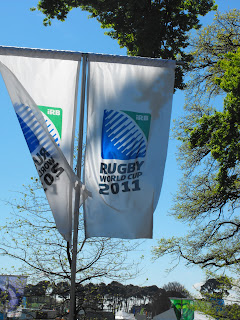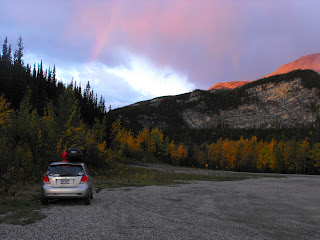"Conjunction Junction, what's your function?" ~~School House Rock
Current Weather:
-16°C|3°F Temperature
-16°C|3°F Wind Chill
Skies: Partly Cloudy
Visibility (miles): Unrestricted Winds (knots): Calm
Delta Bus Driver training, informative and awesome all at the same time. There are three Deltas in the shuttle pool of vehicles that we operate. Delta Dawn, Tina Marie, and Gale. Delta Dawn spawned from 1977, Tina Marie: 1981, my birth year! And Gale: 1987, the baby of the fleet.
-16°C|3°F Temperature
-16°C|3°F Wind Chill
Skies: Partly Cloudy
Visibility (miles): Unrestricted Winds (knots): Calm
Delta Bus Driver training, informative and awesome all at the same time. There are three Deltas in the shuttle pool of vehicles that we operate. Delta Dawn, Tina Marie, and Gale. Delta Dawn spawned from 1977, Tina Marie: 1981, my birth year! And Gale: 1987, the baby of the fleet.
Thus far, Delta Dawn is my favorite just because of the name in honor of Tanya Tucker’s first number one hit, “Delta Dawn.”
Delta Dawn, what's that flower you have on
Could it be a faded rose from days gone by
And did I hear you say he was a-meeting you here today
To take you to his mansion in the sky
She's forty-one and her daddy still calls her "baby"
All the folks around Brownsville say she's crazy
'Cause she walks around town with a suitcase in her hand
Looking for a mysterious dark-haired man
In her younger days they called her Delta Dawn
Prettiest woman you ever laid eyes on
Then a man of low degree stood by her side
And promised her he'd take her for his bride
Delta Dawn, what's that flower you have on
Could it be a faded rose from days gone by
And did I hear you say he was a-meeting you here today
To take you to his mansion in the sky
Could it be a faded rose from days gone by
And did I hear you say he was a-meeting you here today
To take you to his mansion in the sky
She's forty-one and her daddy still calls her "baby"
All the folks around Brownsville say she's crazy
'Cause she walks around town with a suitcase in her hand
Looking for a mysterious dark-haired man
In her younger days they called her Delta Dawn
Prettiest woman you ever laid eyes on
Then a man of low degree stood by her side
And promised her he'd take her for his bride
Delta Dawn, what's that flower you have on
Could it be a faded rose from days gone by
And did I hear you say he was a-meeting you here today
To take you to his mansion in the sky
Before I flew for Antarctica, I was able to do a little research on the Deltas through Foremost, but now that I’m actually here, I’ve been eye to eye with the beast. They are indeed formidable, yet they purr like a kitten all at the same time.
Delta Dawn sits at 43,500lbs of steel and gadgets. She’s 27ft and 2inches long, 10ft and 2inches wide, and 9ft and 2inches tall. She’s a hefty girl. She can hold 90 some gallons of fluid and her flavor is diesel.
What scared me most about driving the Delta was the articulated steering. I had never driven a vehicle where the cab moved separately from the body. However, I quickly learned that it was my new best friend. Due to the articulated steering, you could almost turn the Delta on a dime, its turning radius in some ways better than the 12 passenger vans we drove. My first day driving them, I was doing figure eights in the Delta. Talk about a good time! You could turn the wheel so far that when you looked in your mirror, it looked as if you were going to jackknife the back of the vehicle because it was so close to your wheels, but it was perfectly fine. I had made the mistake of thinking that it operated as though you were hauling a trailer behind you.
Not at all.
Delta Dawn sits at 43,500lbs of steel and gadgets. She’s 27ft and 2inches long, 10ft and 2inches wide, and 9ft and 2inches tall. She’s a hefty girl. She can hold 90 some gallons of fluid and her flavor is diesel.
What scared me most about driving the Delta was the articulated steering. I had never driven a vehicle where the cab moved separately from the body. However, I quickly learned that it was my new best friend. Due to the articulated steering, you could almost turn the Delta on a dime, its turning radius in some ways better than the 12 passenger vans we drove. My first day driving them, I was doing figure eights in the Delta. Talk about a good time! You could turn the wheel so far that when you looked in your mirror, it looked as if you were going to jackknife the back of the vehicle because it was so close to your wheels, but it was perfectly fine. I had made the mistake of thinking that it operated as though you were hauling a trailer behind you.
Not at all.
The articulated steering allowed the box to move almost separately from the cab. You could stop the Delta, put it into park, take it out of gear, turn the vehicle off, and yet you could still turn the steering wheel to straighten up the box behind you if you wanted to. It wouldn’t affect the front wheels at all. It was pretty amazing.
Another thing that was interesting about the Delta was that you had to shift into higher gears to gain a faster speed, yet it was an automatic. I’ll reveal a little secret. Before I arrived to Antarctica, I had a brief panic that maybe the vehicles were standards. I wasn’t sure what I was going to do since to this day I still don’t know how to drive a manual vehicle. I know, I know. What’s wrong with me? What can I say; I’ve lived a sheltered life. I figured that was something they would have asked during the interview and since they hadn’t, I was probably safe. But I was still nervous since I knew we would be driving vehicles from the 1970’s. But it turned out the Deltas as well as Ivan, are automatic, yet in some ways they acted like a manual. There were four gears, as well as a forward, reverse and neutral. You had to reduce your speed on the accelerator to down shift or up shift so you weren’t grinding gears.
If you made the mistake of attempting a hill in too high of a gear, you could risk stalling the engine. With the Deltas, if the engine stalled, you would lose your breaks. The steering and brakes relied on air pressure delivered by an engine driven hydraulic pump. If we lost air pressure, no brakes. A slightly scary concept considering a few years ago, a Delta turned over onto itself head over heels on this steep hillside near the backside of McMurdo due to losing its air pressure. Thankfully no one was hurt in the incident.
There are limited roads we are allowed to drive the Deltas on due to their sheer size and maneuverability.
In town the speed limits are 10mph or less. Just outside of town, you can pick it up to around 15mph. And if you are out on the Ice or Snow Roads, maximum speed limit is 25mph if conditions allow for it. This usually means you are either in 3rd gear or 4th. Due to the balloon tires the Deltas have, at higher speeds the ride often turns bouncy. As a passenger in the back, this makes for uncomfortable conditions as I found out the other afternoon on what they called the “Delta Sleigh Ride with Bill.” They loaded all us new staff into the back of the Delta and took us out onto the Ice Road toward the Airfield.
 |
| All lined up like ducks in a row in the back of Delta Dawn |
The speed limit is 25mph there so Shuttle Bill (Our 72 year old Senior Shuttle Driver) opened Delta Dawn up and let her rip, giving us the full affect. If we hadn’t had our seatbelts on, we would have been on the floor of the box or bouncing so high that our heads would have hit the ceiling. The key concept of the lesson was to drive at a reasonable and safe speed to keep our passengers comfortable. Despite the fact that we all thought the “sleigh ride” was a blast because it felt like we were off roading in a Delta, it was obvious that you could easily get hurt in the back if you were driving at unreasonable speeds and hitting every bump you came across. Plus, it just wasn’t good to be bouncing a 43,500lb vehicle over six feet of sea ice. Not exactly the smartest thing to be doing.

































